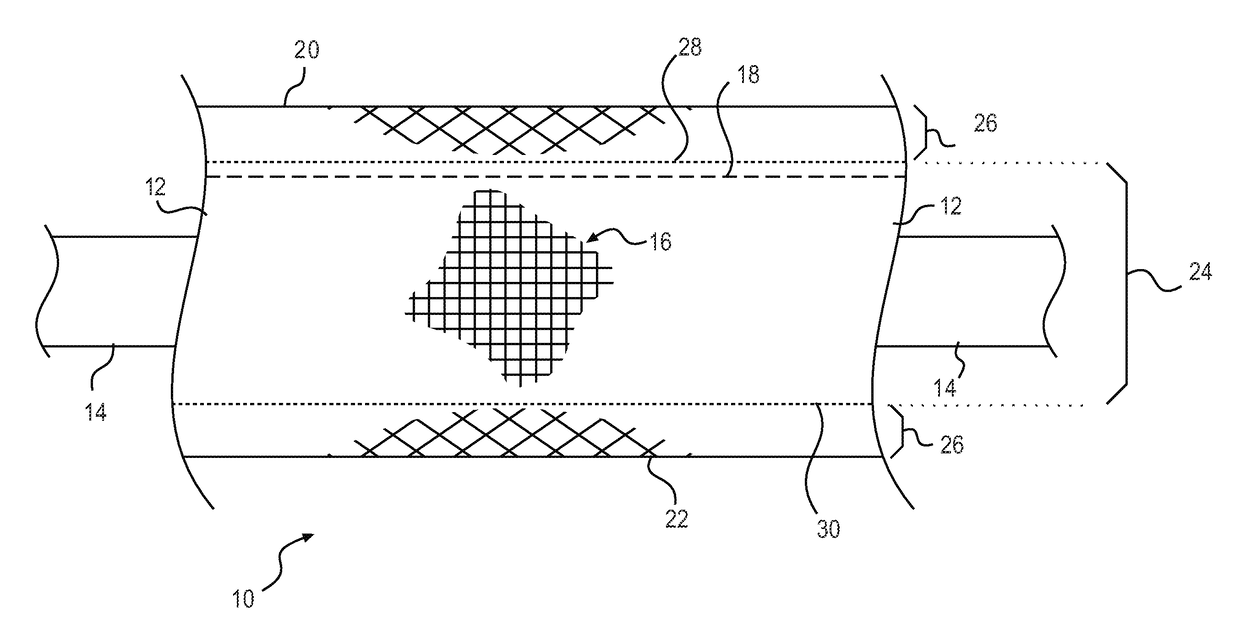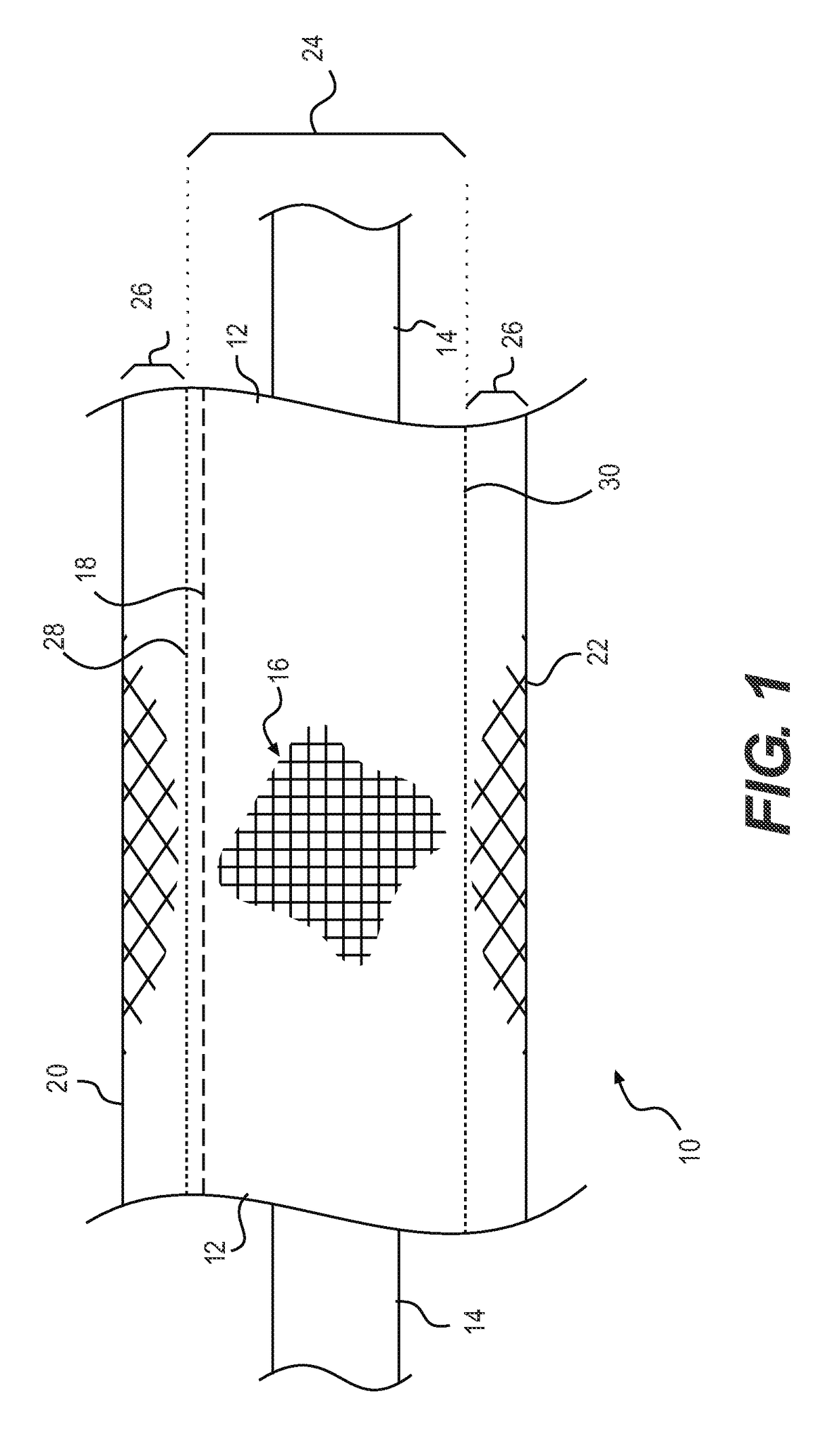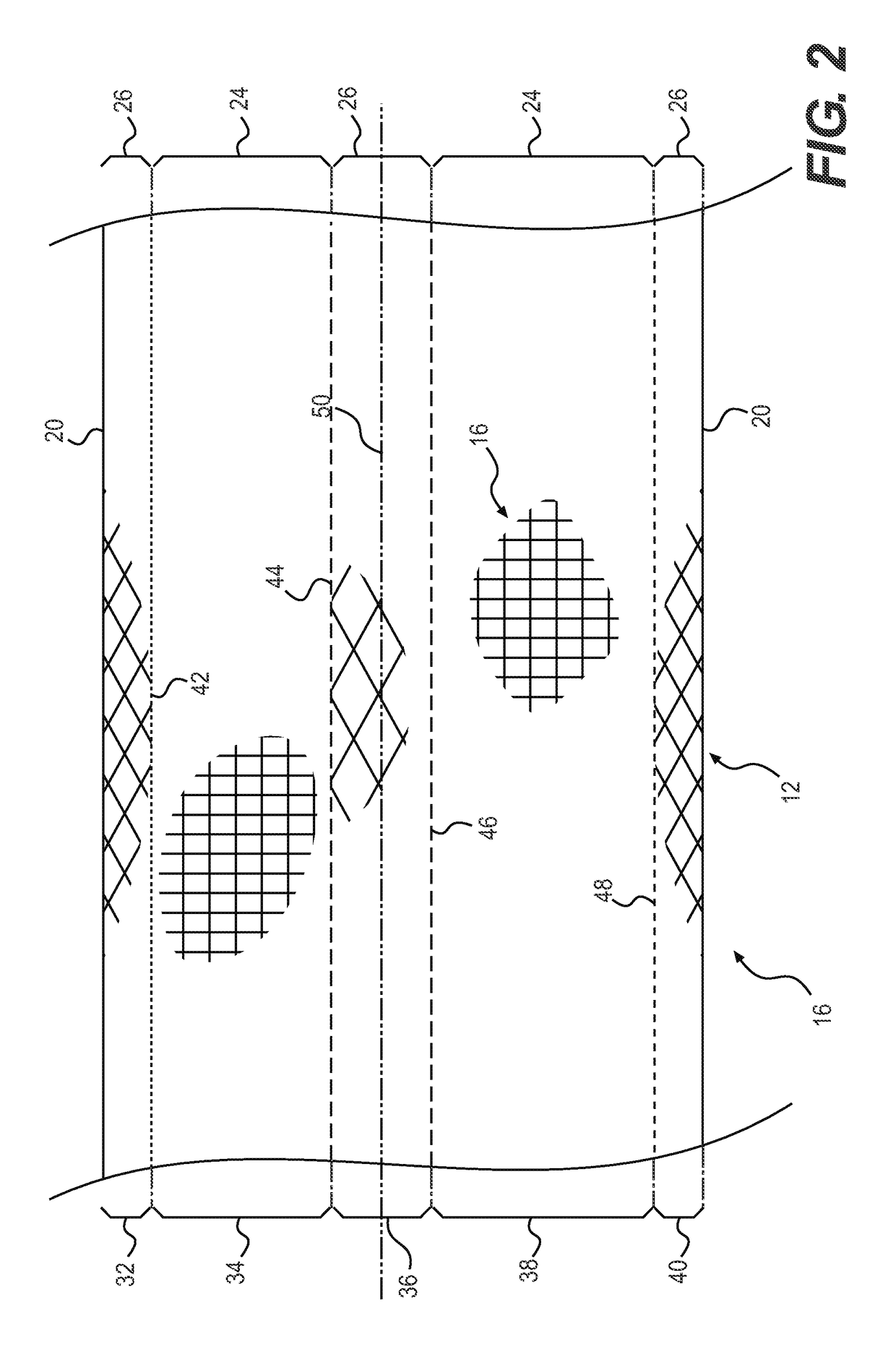Wire casing and method of making the same
a technology of underwires and casings, which is applied in the field of tubular fabrics, can solve the problems of product failure, deleterious effect on customer satisfaction, and end of underwires that can penetrate tubing, and achieve the effects of increasing comfort, and increasing comfort to wearers
- Summary
- Abstract
- Description
- Claims
- Application Information
AI Technical Summary
Benefits of technology
Problems solved by technology
Method used
Image
Examples
first embodiment
[0071]FIG. 3 is a cross-sectional, end view of the encased wire 10 according to the present invention. With the fabric ribbon 16 folded along the fold line 50 and sewn along the seam 18, the fabric ribbon 16 forms the casing 12 that encapsulates the underwire 14. The first and second woven regions 24, 26 are designated for clarity, as are the first and second edges 20, 22, among others of the features discussed above.
[0072]In FIG. 3, the underwire 14 is shown with a circular cross-section. It is noted that this shape is merely exemplary of one contemplated cross-sectional shape for the underwire 14. Other shapes may be employed without departing from the scope of the present invention. For example, the underwire 14 may have an oval, elliptical, asymmetric, angular, square, rectangular, triangular, polygonal, or other shape. While any shape may be employed for the underwire 14, it is contemplated that rounded shapes will be employed to increase the comfort associated with the encased...
third embodiment
[0080]FIG. 5 is a cross-sectional view of an encased wire 58 according to the present invention. In this figure, the casing 60 is not folded around a fold line 50. Instead, as discussed above, the casing 60 is formed from two separate fabric ribbons 62, 64 that are joined at the seams 66, 68. As before, for simplicity, reference numbers are repeated for elements common to the other embodiments.
[0081]With continued reference to FIGS. 1-5, it is noted that the seams 18, 56, 66, 68 are each disposed within the first woven regions 24 of the casings 12, 54, 60. The positioning of the seams 18, 56, 66, 68 in the first woven regions 24 is not required to practice the present invention. The seams 18, 56, 66, 68 may be disposed within the second woven regions 26 without departing from the scope of the present invention.
[0082]As noted above, it is contemplated that the wire casing 12, 54, 60 comprises textured nylon and weft threads woven into one or more (i.e., two) fabric ribbons 16, 62, 64...
fifth embodiment
[0093]FIG. 7 is a cross-sectional illustration of an encased wire 82. The casing is designated 84. This embodiment of the encased wire 82 incorporates first and second fabric layers 74, 76, as in the embodiment illustrated in FIG. 6. In this embodiment, however, the second end 22 includes a folded end, similar to the embodiment illustrated in FIG. 4.
PUM
 Login to View More
Login to View More Abstract
Description
Claims
Application Information
 Login to View More
Login to View More - R&D
- Intellectual Property
- Life Sciences
- Materials
- Tech Scout
- Unparalleled Data Quality
- Higher Quality Content
- 60% Fewer Hallucinations
Browse by: Latest US Patents, China's latest patents, Technical Efficacy Thesaurus, Application Domain, Technology Topic, Popular Technical Reports.
© 2025 PatSnap. All rights reserved.Legal|Privacy policy|Modern Slavery Act Transparency Statement|Sitemap|About US| Contact US: help@patsnap.com



